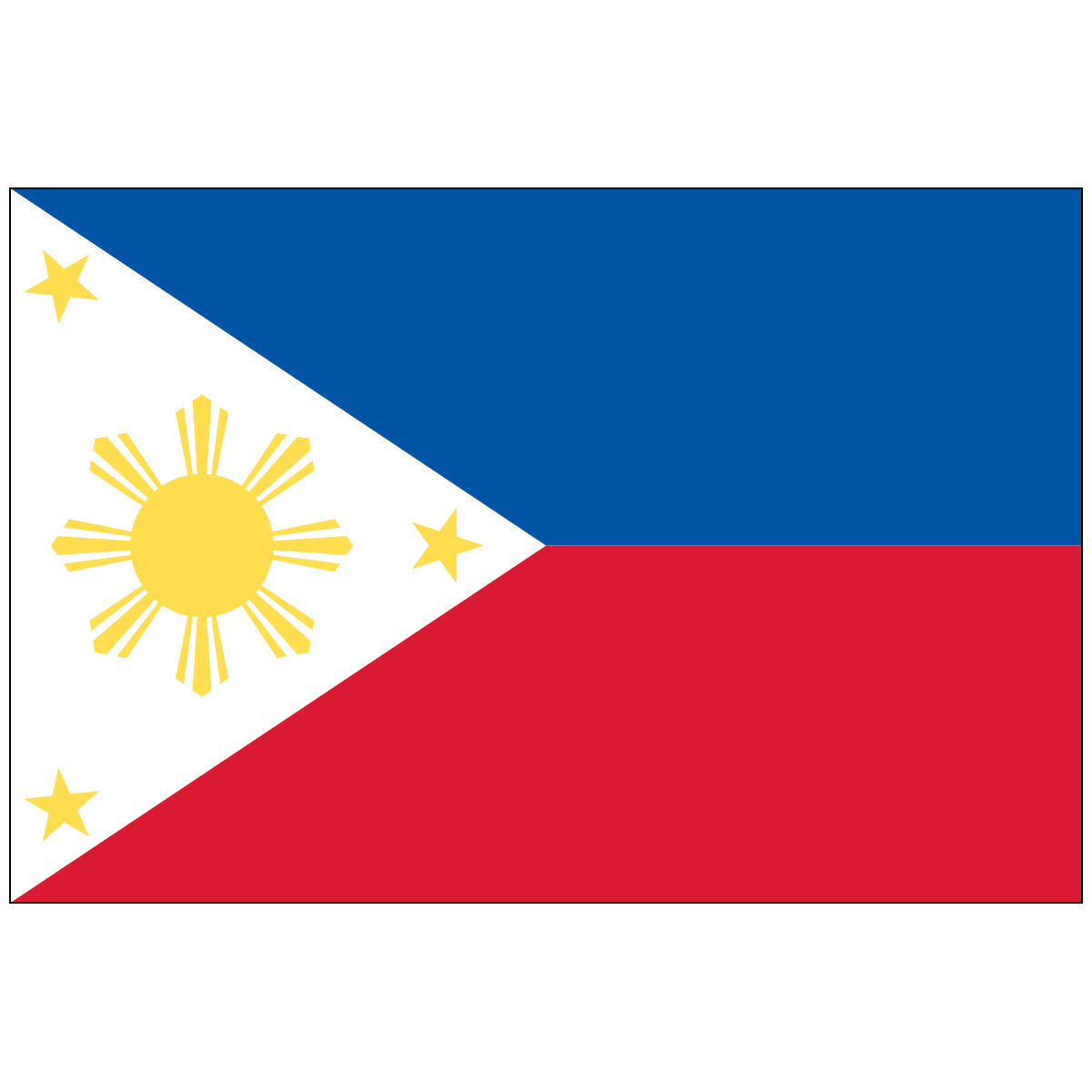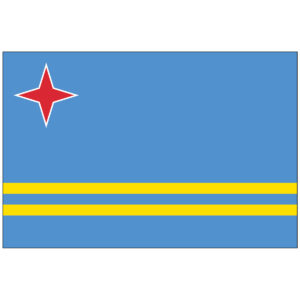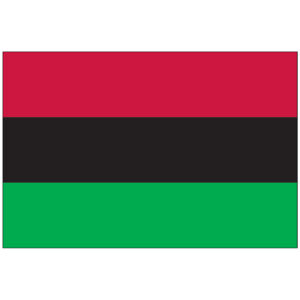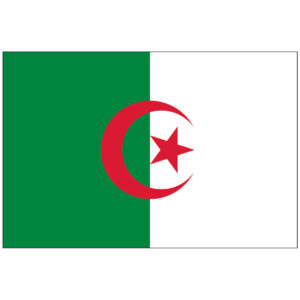About Our Philippines E-poly Flag
The flag's length is twice its width, giving it an aspect ratio of 1:2. The length of all the sides of the white triangle are equal to the width of the flag. Each star is oriented in such manner that one of its tips points towards the vertex at which it is located. Moreover, the gap-angle between two neighbors of the 8 ray-bundles is as large as the angle of one ray-bundle (so 22.5°), with each major ray having double the thickness of its two minor rays. The golden sun is not exactly in the center of the triangle but shifted slightly to the right. The shade of blue used in the flag has varied over time, beginning with the original color described as Azul Oscuro (Spanish, "dark blue"). The exact nature of this shade is debated, but a likely candidate is the blue on the Cuban flag, which a theory says influenced the Philippine flag's design. The colors of the flag were first standardized by President Ramón Magsaysay, upon the recommendation of the Philippine Heraldry Committee (PHC) dated January 24, 1955. Specifically, the colors adopted were Old Glory Red (Cable No. 70180), National Flag Blue (Cable No. 70077), Spanish Yellow (Cable No. 70068), and White (70001) by the Reference Guide of the Textile Color Card Association of the United States. In 1985, President Ferdinand E. Marcos through Executive Order No. 1010, s. 1985 instructed the National Historical Institute "to take the necessary steps to restore the original color of the First Philippine Flag". In late May, the NHI adopted Oriental Blue (Cable No. 80176) for the new national flag, but this was later rescinded by President Corazon C. Aquino after the 1986 People Power Revolution that removed him from power in favor of pre-1985 National Flag Blue. For the 1998 centennial celebration of Philippine independence, the Flag and Heraldic Code of the Philippines (Republic Act. 8491, s. 1998) was passed, designating Royal Blue (Cable No. 80173) as the official variant to be used from 1998 to present. The flag's colors are specified and codified under Republic Act 8491, s. 1998 signed on February 12, 1998, in terms of their cable number in the system developed by the Color Association of the United States. In the 1850s, both Manila and Iloilo, the islands' largest ports, had maritime flags used for navigation in Philippine seas. Both maritime flags were swallowtail flags with blue and red stripes, which are now both part of the Philippine flag.The Philippine national flag has a rectangular design that consists of a white equilateral triangle, symbolizing liberty, equality and fraternity; a horizontal blue stripe for peace, truth, and justice; and a horizontal red stripe for patriotism and valor. In the center of the white triangle is an eight-rayed golden sun symbolizing unity, freedom, people's democracy, and sovereignty. Each ray represents a province with significant involvement in the 1896 Philippine Revolution against Spain; these provinces are Manila, Bulacan, Cavite, Pampanga, Morong (modern-day province of Rizal), Laguna, Batangas, and Nueva Ecija (some sources specify other provinces as alternatives to some of these[a]). However, according to the Declaration of Independence and a research by Ateneo de Manila University Professor Ambeth Ocampo, the rays of the sun symbolized the first eight provinces of the Philippines which was declared under martial law during the Philippine Revolution (Batangas, Bulacan, Cavite, Manila, Laguna, Nueva Ecija, Pampanga and Tarlac). Three five-pointed stars, one at each of the triangle's points, stand for the three major island groups: Luzon, Visayas (originally referring to Panay Island) and Mindanao.




